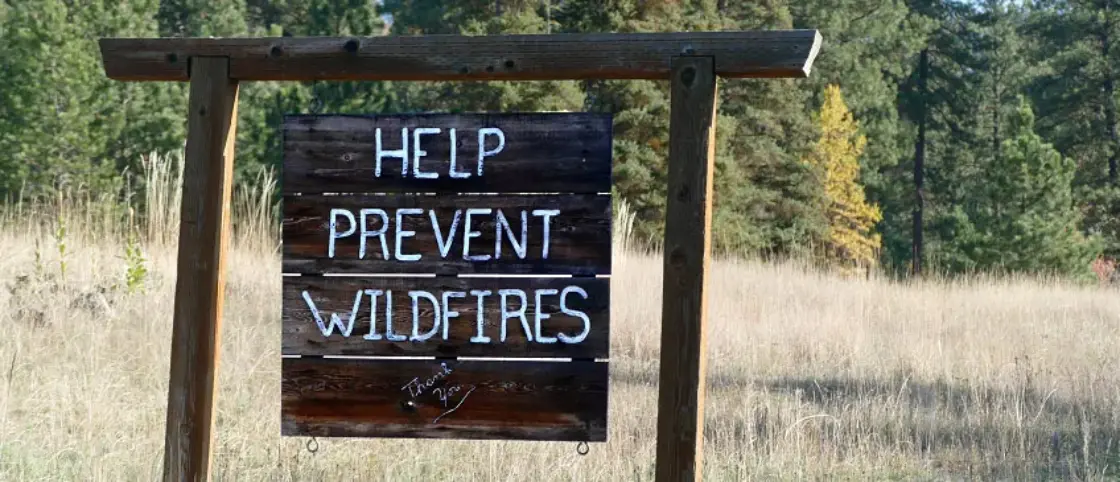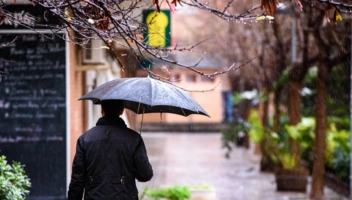How to Prevent Wildfires

Smokey Bear had it right all along: only YOU can prevent wildfires. Roughly 90 percent of all wildfires are caused by humans, and according to the National Interagency Coordination Center, there were nearly 69,000 wildfires spanning more than 7.5 million acres in 2022 alone.
With October being Fire Prevention Month, we owe it to both ourselves and our neighbors to learn how to prevent wildfires and keep our loved ones safe.
Whether you’re at home, on vacation, or traveling, preparing for a wildfire can help prevent the worst from happening. From properly putting out your campfire to hardening your home, preventing wildfires can not only save your life and your property but also your community.
- Prepping is the Best Way to Prevent Wildfires
- Home Solutions to Prevent Wildfires
- Community Involvement
- Frequently Asked Questions
Prepping is the Best Way to Prevent Wildfires

Photo by Nika Zhorzholiani via Pexels
Be prepared all year long for the possibility of a wildfire. The better equipped you and your community are, the easier fire season can be for everyone.
You can begin with a Community Wildfire Protection Plan—a collaborative plan that outlines how the community can work together to keep residents safe by managing the surrounding landscape.
Understand how wildfires start and spread to help reduce the risk of a wildfire threatening your property. Survey your land, draw up a plan, harden your home, prepare an emergency kit and bag, and create an evacuation plan for your family.
It’s also a good idea to check with your neighbors to determine what might need to be addressed if your properties overlap within 100 feet.
Home Solutions to Prevent Wildfires
Believe it or not, strong gutters are your home's first line of defense against fires! LeafFilter's flame-resistant uPVC frame withstands heat, keeping you safe. Discover more on house fire prevention here: https://t.co/ny2wmR2Jx5 🔥 #WildFires #HardenYourHome #SafetyFirst pic.twitter.com/n22wDfjdTQ
— LeafFilter Gutter Protection (@LeafFilter) September 18, 2023
To help prevent wildfires and keep your community safe, start at home. With multiple ways to harden your home, you can protect your land and home from direct flames, radiant heat, and flying embers.
Consider the following tips to prevent wildfires:
- Create a 100-foot defensible space: Check out the three zoning recommendations for creating a defensible area on your property. These zones are broken down into:
- Zone 0: Within five feet of your home is the ember-resistant zone. The goal is to reduce combustible materials and flammable items that could ignite your home.
- Zone 1: The goal from five to 30 feet around your home is to keep a small amount of well-spaced vegetation, which helps break the fuel flow. Likewise, keep the grass mowed and all plant life well hydrated, and keep dry, dead vegetation picked up.
- Zone 2: From 30 to 100 feet around your property, help reduce the risk of fire spreading by trimming bushes, pruning trees, thinning dense vegetation, and retrofitting your home with noncombustible materials.
- Harden your home: Besides building a defensible space on your property, you should also harden your home. From your home’s roof, to the windows, to the gutters, to decks and garages, outfit your home with noncombustible materials, plug any gaps, and use fire-resistant screens or covers to prevent embers from lodging near or in your home.
- Make sure your gutters are properly protected. LeafFilter Gutter Guards cover your rain gutters to keep debris out of your gutters—even debris as small as pollen and shingle grit. Our patented technology allows only water to flow through, preventing the buildup of debris that could otherwise catch flying embers, thereby helping to slow the spread of fire and reduce the risk of a wildfire destroying your home.
Community Involvement

The best way to prevent wildfires is to get the entire community involved in the process. Wildfires don’t pay attention to property lines, and they don’t play favorites. Anyone in the way of a wildfire is at risk.
Put together a Community Wildfire Protection Plan. Invite local officials and the fire department to help survey the community’s risk for wildfire. Create a plan to clean up public spaces and implement individual homeowner recommendations.
Other things to consider to help prevent wildfires in the community include:
- Never leave your in-use stove, grill, or campfire unattended.
- Stay informed about upcoming weather and local drought conditions.
- Use an appropriate fire pit or ring for a campfire.
- Be sure fires are completely out before leaving the area.
- Keep your vehicles off of dry grass or vegetation.
- Maintain your vehicles or outdoor equipment to reduce the chance of sparks.
- Dispose of matches, lighters, or smoking paraphernalia in a safe manner.
- Be aware of local burn laws and fire danger levels.
- Follow local regulations regarding fireworks use.
If you live in an area prone to wildfires, you should keep your yard and home clear of flammable debris that might pose a risk in the event of a wildfire. LeafFilter gutter guards can not only stop leaves from entering your gutters, but they keep debris like shingle grit, pine needles, and even pollen out, preventing debris buildup inside your gutters that could be ignited by a flying ember.
In addition, by preventing clogs from forming inside your gutters, our patented gutter protection system helps protect your home from the serious water damage that clogged gutters can cause.
More than 1.2 million homeowners have trusted LeafFilter gutter guards to prevent clogs inside their gutters and protect their homes from water damage caused by clogged gutters. Call us today at 1-800-290-6106 to learn more about how we can help or request a free, no-obligation estimate that’s good for a full year.
Frequently Asked Questions
How can wildfires be stopped?
Wildfires are stopped using suppression; that is, managing, modifying, or putting out a fire. By removing heat, oxygen, or fuel, the three things a fire requires to grow, firefighters can extinguish a spreading fire.
Can wildfires be prevented or predicted?
Since the majority of wildfires are caused by humans, it’s tough to predict when one might happen. Once a wildfire is spreading, it’s equally as difficult to predict where it will go. However, preventing a wildfire is possible when individuals follow fire-safety precautions and the community works together to reduce the risk of a wildfire.
What are the 3 tactics for wildland fire suppression?
Three tactics for wildland fire suppression include:
- Direct attack: Emergency personnel directly attack the edge of the fire.
- Indirect attack: Emergency personnel control the fire by creating fuel breaks.
- Aerial attack: Emergency personnel fight the fire from the air by dropping water or fire retardants.
Does cold weather stop wildfires?
Cold weather does not stop wildfires from starting or spreading, but precipitation that may happen in winter could help decrease the chance. However, it doesn’t take long for dry, hot weather to increase fire risk.


